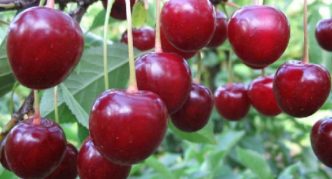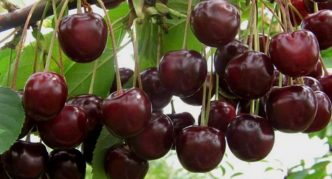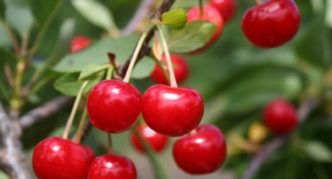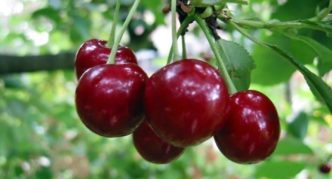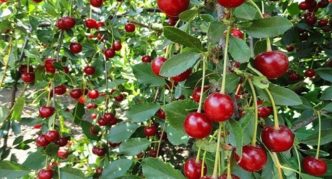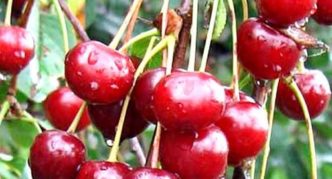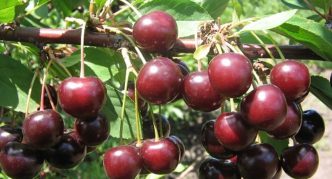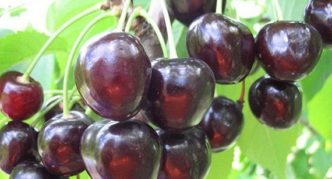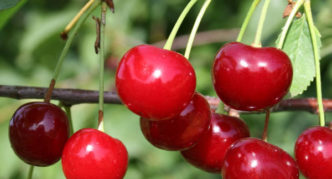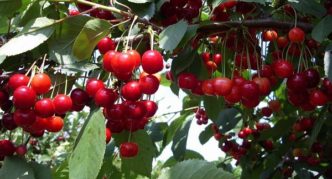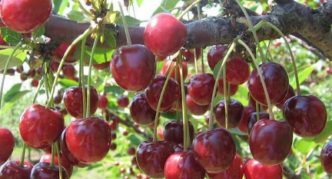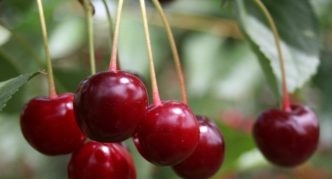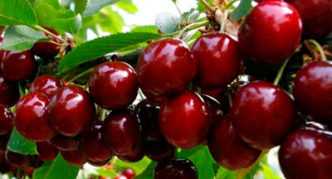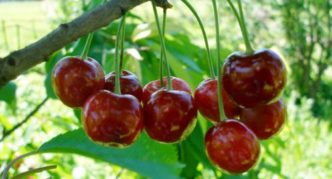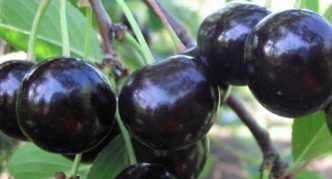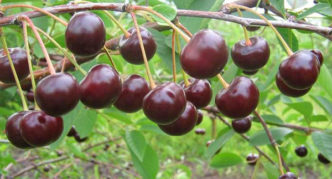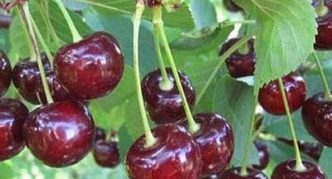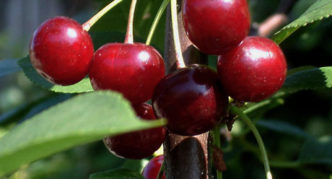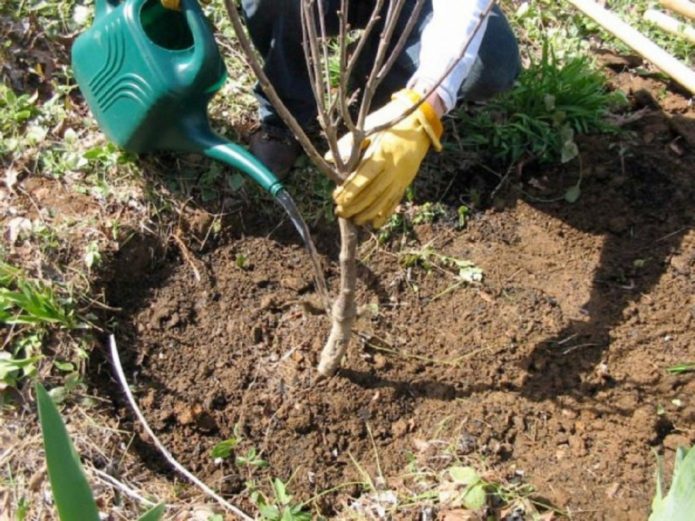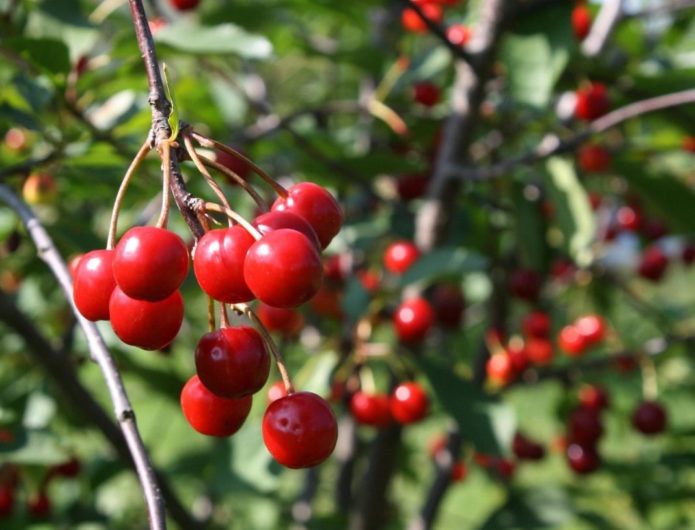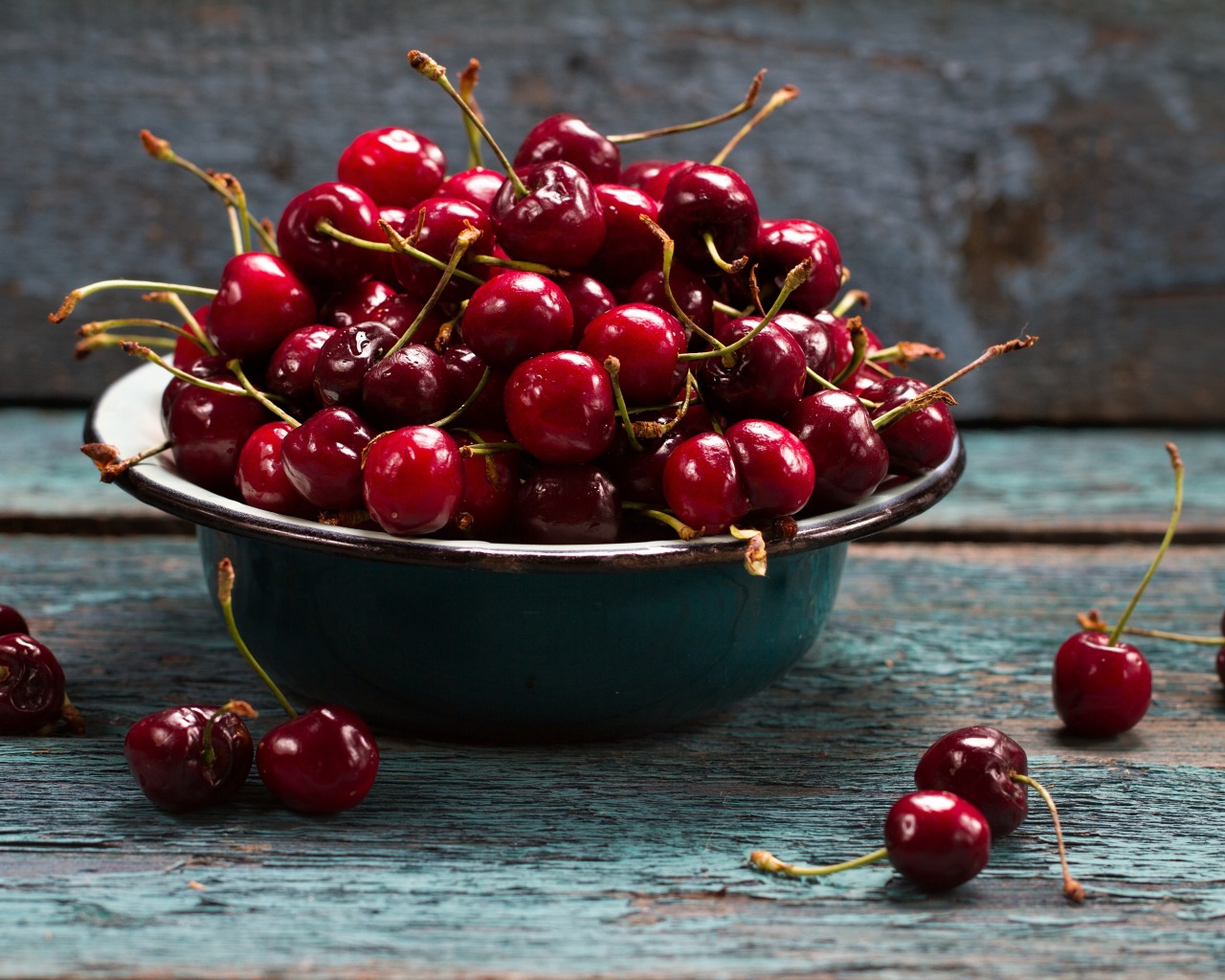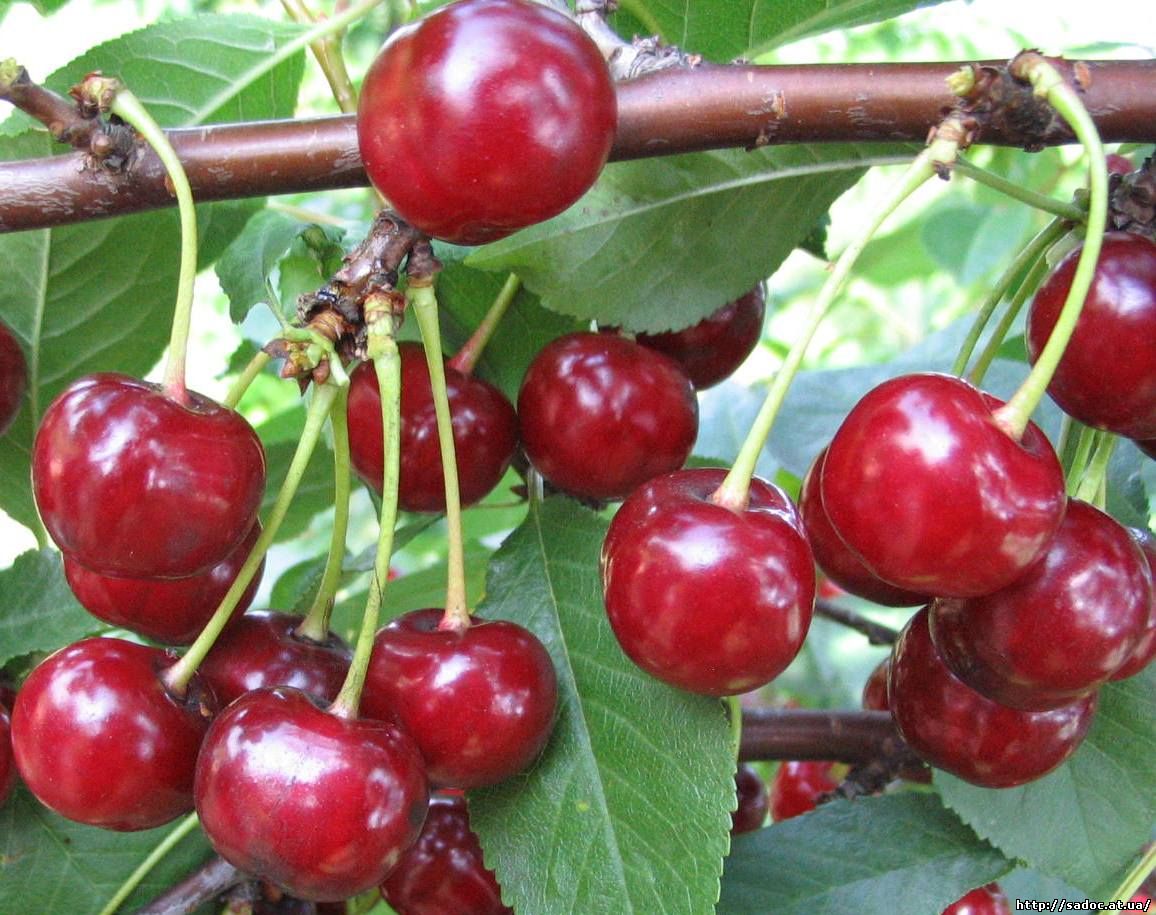Cherries are delicious and healthy. Many gardeners plant cherries on their plots, but few of them can boast of a high yield, despite all the efforts. How to choose the right variety for the Moscow region and how to plant cherries correctly?
Content
Popular cherry varieties for the Moscow region
There are many varieties of cherries, and it is not so easy to understand them. To make your choice the most successful, try to choose varieties with the following characteristics:
- winter hardiness;
- resistance of flower buds to recurrent frosts;
- self-fertility;
- resistance to the most common diseases.
The main thing is to choose zoned varieties. They are better adapted to the harsh winters of the Moscow region.
The zoned cherries are able to withstand frost up to 35 ° C. Frost resistance of flower buds is of fundamental importance, because low temperatures during flowering can completely ruin the crop.
The most important criterion when choosing a variety for the Moscow region is resistance to fungal diseases. Most often, cherries in the Moscow region have been affected in recent years by coccomycosis and moniliosis, and there are no varieties that would have good resistance to both diseases at the same time.
There are several varieties that are relatively resistant to coccomycosis:
- Bulatnikovskaya;
- Tamaris;
- Brunette;
- Volochaevka;
- Robin;
- Youth;
- Memory of Yenikeev;
- Rastorguevskaya;
- Sudarushka;
- Chocolate girl;
- Anthracite;
- Turgenevka;
- Silvia;
- Assol.
One of the decisive criteria for optimal selection of cherry varieties is the method of pollination. By their ability to self-pollinate cherries are divided into:
- self-fertile;
- partially self-fertile;
- self-infertile.
Self-fertile varieties of cherries
The advantage of self-fertile varieties is that trees can bear fruit without pollinators. Up to 40% of self-fertile cherry flowers form ovaries, pollinated by their own pollen. On partially self-fertile, this percentage is lower, up to 20%. Self-fertile cherries without cross-pollination are able to pollinate only 5% of flowers.
Choose several varieties for your garden and try to choose varieties that bloom at the same time. The flower structure of self-fertile cherries allows them to pollinate even before the flower opens. Their pollen is able to germinate within two weeks. Planting a pollinator next to self-fertile cherries will increase their yield.
Self-fertile varieties of the Moscow region include:
- Brunette;
- Bulatnikovskaya;
- Lyubskaya;
- Volochaevka;
- Kizilovaya;
- Youth;
- Octave;
- Memory of Yenikeev;
- Sania;
- Sudarushka;
- Tamaris;
- Rusinka;
- Chocolate girl;
- Rastorguevskaya;
- Assol;
- Steppe - Flaming, Generous.
Among the self-fertile varieties, the varieties Sudarushka, Volochaevka and Oktava have high resistance to flower buds. This means that bad weather during flowering will not prevent the formation of ovaries. These varieties are also relatively resistant to coccomycosis and moniliosis.The combination of such useful qualities makes these varieties reliable for growing in the Moscow region.
Table: self-fertile cherry varieties in the Moscow region
| Variety | Sustainability flower buds | Winter hardiness | Resistance to coccomycosis | Resistance to moniliosis | Flowering time | Yield (kg per tree) |
| Assol | average | average | above average | average | average | 10 |
| Brunette | average | above average | average | average | average | 10–12 |
| Bulatnikovskaya | average | high | high | average | average | 10–12 |
| Volochaevka | high | average | average | average | average | 12–15 |
| Kizilovaya | high | high | weak | weak | late | 8–9 |
| Lyubskaya | low | high | below the average | below the average | mid-late | 12 |
| Youth | average | above average | average | average | late | 10–12 |
| Octave | high | average | average | average | late | 15 |
| Memory of Yenikeev | average | average | average | average | mid-early | 10 |
| Rastorguevskaya | average | high | average | average | mid-early | 9 |
| Rusinka | average | high | below the average | below the average | average | 10–12 |
| Sania | average | above average | average | average | late | 10–12 |
| Sudarushka | high | high | average | good | average | 8 |
| Tamaris | average | high | high | average | late | 10 |
| Chocolate girl | high | high | below the average | below the average | average | 12 |
Photo gallery: reliable self-pollinated varieties
- Volochaevka is an ideal option for the Moscow region. Ripens on July 20 - 25. Yields up to 15 kg per tree
- Sudarushka is appreciated for its winter hardiness and high quality of fruits. Ripens July 20 - 25
- Octave is a high-yielding variety. Ripening period: late July - early August
- Rastorguevskaya is appreciated for the excellent taste of the fruit. Ripening period: beginning - mid-July
- The brunette is a high-yielding variety. Ripens July 20 - 25
- Bulatnikovskaya is a high-yielding variety. Ripens in late July, early August
A good option for the Moscow region is the Tamaris cherry. It is a self-fertile variety. Its yield will increase if the varieties Turgenevka and Lyubskaya are planted nearby. The tree begins to bear fruit in the second or third year. Tamaris blooms late, which helps to avoid spring frosts. Harvesting in early August. The fruits are large, up to 5 g, sweet. Low growth is another of the advantages of the variety. With a growth of up to 2 meters, it gives up to 10 kg of fruits from a tree. It is a very productive variety. Tamaris cherry is disease resistant.
Sweet cherries
Cherries usually have a sweet and sour taste. Some varieties have a sweet taste with a slight sourness. Such cherries are much larger and they ripen later than others. Sweet varieties are more demanding to care than other varieties. The sweetest are the result of crossing cherry and sweet cherry. When tasting, the dessert taste of the fruit is estimated at 4.5–5 points. Most sweet cherry varieties are self-fertile:
- Assol;
- Youth;
- Volochaevka;
- Tamaris;
- Chocolate girl;
- Memory of Yenikeev;
- Shpanka Bryansk.
Zhivitsa and Zhuravka are self-fruitless varieties.
Sweet varieties of cherries near Moscow: photo
- Youth is a reliable, high-yielding variety. Ripens July 20 - 25
- Zhuravka is a winter-hardy variety. Ripens in mid-August
- Tamaris is a high-yielding variety. Ripening period: late July - early August
- Shokoladnitsa is a winter-hardy fruitful variety. Ripens in the second half of July
- Zhivitsa is a frost-resistant variety with sweet fruits. Ripens in mid-August
- Assol is a self-fertile winter-hardy variety with high taste.
When choosing sweet varieties, you should pay attention to the Zhuravka variety. This is a short tree that starts bearing fruit in its third year. A very productive variety, up to 10 kg per tree. The fruits are beautiful, large, up to 7 g and of excellent quality. The variety is hardy, late flowering, ripens in mid-August. The variety is self-fertile. The best pollinators for Zhuravka: cherry varieties Turgenevka, Oktava, Kizilovaya. Resistance to coccomycosis and moniliosis is average
Early varieties of cherries
For cherries, the more important criterion is not the ripening time of the crop, but the flowering time, since early flowering cherries can get frozen.Cherry blossoms and ovaries can be affected by frost in May. As for the timing of ripening, cherries are
- early (ripens in early to mid-July);
- medium (in the second half of July);
- late (late July - early August).
When choosing early varieties, know: the later the harvest ripens, the more winter-hardy the variety is. In the Moscow region, it is preferable to plant medium-late and late cherries. From early ripening varieties in the Moscow region are grown:
- Memory of Yenikeev;
- Sania;
- Shpanka Bryanskaya;
- Cherry.
Early varieties of cherries in the Moscow region: photos
- Pamyat Yenikeeva is a self-fertile early ripe variety with large tasty fruits
- Sania is a fruitful self-fertile variety. Blooms late, ripens early. Spicy taste, universal use
- Cherry - A hybrid of cherry and cherry. The fruits are very large, weighing up to 9 g, very tasty
- Shpanka Bryanskaya is a hybrid of cherry and sweet cherry. Frost and drought resistant. Ripens at the end of June
Dwarf cherries
It is very convenient to grow dwarf and undersized cherry varieties in the country. They are easier to handle. It is easier to harvest from them. They are fruitful and do not take up much space. The height of a dwarf cherry reaches 2 m. The weight of the berries is on average 5 g, the pulp of the berries is dense. Dwarf cherries are less demanding to care for, they are not afraid of frost and strong winds. When planting dwarf varieties, take care of good lighting for cherries, do not allow shading by taller trees on the site. The following varieties are popular:
- Anthracite;
- Vladimirskaya;
- Lyubskaya;
- Youth;
- Mtsenskaya;
- Tamaris;
- Bystrinka;
- Chocolate girl.
Dwarf cherries: varieties and their berries in the photo
- Anthracite cherry - mid-season, partially self-fertile, winter-hardy variety
- Vladimirskaya - self-fertile cherry of high yield
- Lyubskaya cherry is a self-fertile variety of folk selection. Up to 25 kg of berries can be harvested from one tree
- Mtsensk cherry is self-fertile. Fruit ripening is average (20-25 July), simultaneous
- Bystrinka - the variety is characterized by moderate growth and excellent fruit qualities
Bush cherry varieties
Shrub cherry varieties are also called steppe. This is a low shrub up to 2 meters high. Steppe cherry is distinguished by drought resistance and winter hardiness, it suffers less from fungal diseases, it is undemanding to the soil, but it is demanding to light. Shrub cherry bears fruit already 3-4 years after planting. Bush cherry lives 15–20 years. The berries of the steppe cherry taste sour than the berries of ordinary cherries. Well-proven:
- Generous;
- Gnome;
- Seliverstovskaya;
- Flaming;
- Vole.
How to plant cherries correctly
Cherry loves light in composition, well-drained soil. It needs a land of neutral acidity. You need to plant a tree on a hill, in a bright place, away from groundwater. The ideal option is on a gentle western slope with a slope of 5-10 degrees. It is undesirable to plant on the lower part of the slope or in the valley. Do not plant cherries on southern slopes. It is there that cherries often receive frost damage in winter and suffer from lack of water in summer. Cherries are planted in spring, in April, until the buds have blossomed.
The choice of a seedling is a very responsible business. A seedling with a blooming leaf is considered to be of poor quality. For planting, you should choose a one-year or two-year seedling. The optimal growth of a seedling is 70–80 cm for a one year old and 100–110 cm for a two year old. A seedling with a well-developed root system has tap and fibrous roots. The bark of the seedling should be a uniform brown color without blotches.
Cherry planting pattern on a plot of 3 x 3, that is, 3 meters between cherries in a row and a minimum of 3 meters between rows. Low-growing cherries can be planted in a 2 x 3 pattern, i.e. 2 meters between cherries in a row and 3 meters between rows. It is advisable to prepare the landing pit in advance. The size of the pit depends on the fertility of the soil. If the soil is not fertile enough, prepare a hole 80 cm in diameter and 60 cm deep. If the soil is fertile, black earth, then a hole 60 cm in diameter and 40-50 cm deep is enough.When digging a hole, fold the fertile top layer to one side and the bottom layer to the other. It is better to plant cherries on a cloudy, windless day.
Landing technology:
- Place a layer of crushed limestone on the bottom of the pit.
- In the planting hole, mix the soil with humus in a 1: 1 ratio and add a half-liter can of ash.
- Make a small earthen mound.
- Place the seedling on a mound, gently straightening the roots. It is important that the roots are not bent upwards. The root collar should not be below ground level.
- Cover the roots with a fertile layer of soil.
- Water. Half a bucket of water will be enough.
- Place the peg and tie the cherry to the peg.
- Cover the cherries with fertile soil until the end.
- Tamp the soil gently around the trunk.
- Make a hole in the ground around the cherry.
- Water the seedling well.
- Cover the soil with compost or humus.
Video: how to plant cherries in spring
https://youtube.com/watch?v=VEnpDkpUzlY
Cherry reviews
There is one variety ... of the selection of our Moscow VSTISP (Institute of Horticulture), it is called Cherry, resistant to moniliosis, anthracnose and coccomycosis. The variety is very early ripening, highly self-fertile, begins to bear fruit in the third year after planting, the fruits are large, dark-colored, however, with a wet separation, the taste is 4.3 points.
About cherries I can advise in Memory of Yenikeev, very large berry, delicious. The tree is medium sized, spreading. Also, probably, Vladimirskaya and Youth. With this kit, ensure cross-pollination and yield, respectively, at the lowest cost. The harvest will be fairly stable.
In the spring of 2010 I bought Oktava cherries in Sadko. I liked the taste very much, I regret that I took only 2 pieces. The taste is very decent.
In the Moscow region, it is advisable to grow cherry varieties that have high or medium resistance to diseases and to carry out regular prevention of these diseases in your garden. When I was selecting varieties of cherries and cherries for myself, I "scoured" a lot of information on this topic. I opted for self-fertile cherries Shokoladnitsa and Molodezhnaya. In turn, I can recommend them to you, plus a few more self-fertile varieties (Brunetka, Bulatnikovskaya). Of the self-infertile (another pollinator variety is needed), Zhukovskaya, Malinovka cherries do not suffer very much from moniliosis and coccomycosis.
